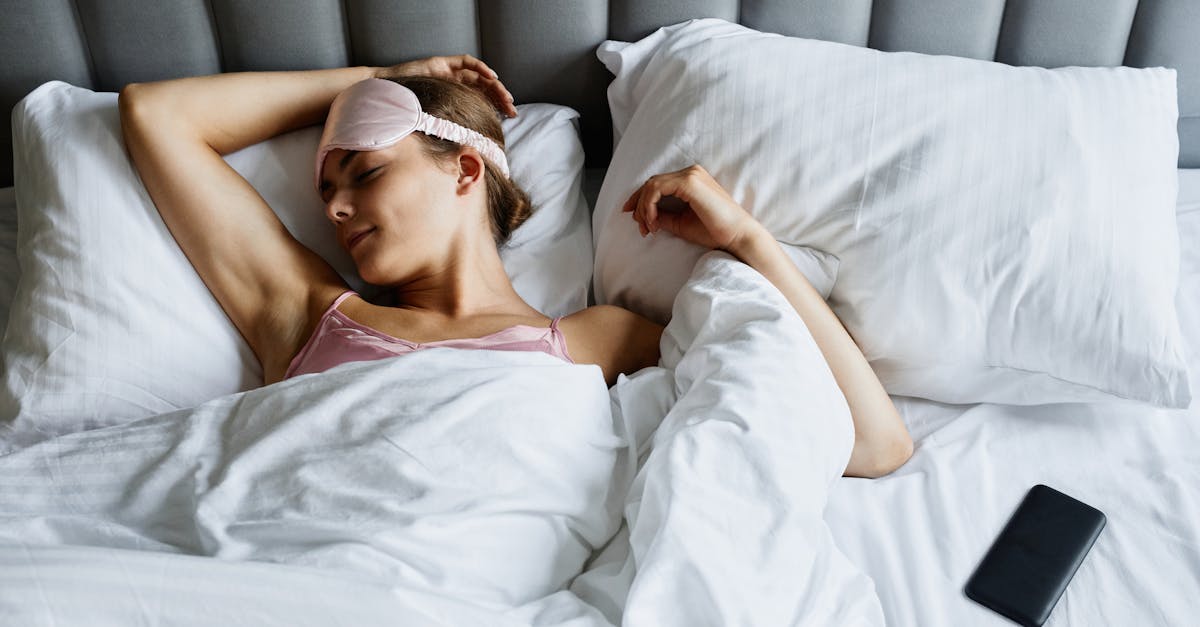In Short Digital detox refers to the intentional reduction of screen time to alleviate the physical discomforts associated with excessive device usage, such as headaches. The primary benefits of a digital detox include improved eye health, diminished strain, and a reduction in frequency and intensity of migraine attacks. It works by encouraging individuals to create screen-free zones, utilize timers for device use, and engage in activities that do not involve screens. This approach not only enhances overall well-being but also fosters better sleep patterns, ultimately supporting a healthier lifestyle for those affected by screen-related ailments. |
The phenomenon of digital detox has emerged as a critical strategy for those suffering from screen-related headaches. Reducing screen time can significantly alleviate symptoms such as eye strain, dry eyes, and blurry vision that often trigger migraine attacks. By creating screen-free zones in homes and setting strict limits on device usage, individuals can reclaim their well-being and experience improved sleep patterns. Furthermore, stepping back from continuous digital engagement can yield emotional benefits, enhancing overall focus and reducing stress.

Welcome to Pulse Align, where our innovative, non-invasive approach fosters optimal posture and natural balance within your body. With a focus on gentle stimulation, we help clients reclaim their well-being through a recalibration process that promotes muscle tone symmetry. Discover how we can gently alleviate discomfort and tension, allowing you to enjoy a more comfortable and balanced life.
Restoring Balance through Gentle Pulses
At Pulse Align, we believe in the body’s natural ability to return to its optimal function. Our method involves gentle, imperceptible pulses that stimulate the body to self-correct and restore its balance. By focusing on muscle tone symmetry, our approach often leads to reduced tension and enhanced comfort. Clients appreciate this novel alternative as a foundation for their wellness journey.
Recalibration for Natural Improvement
Rather than directly addressing discomfort or conditions, we emphasize the importance of supporting your body’s natural processes. Clients often share their experiences of improved postural alignment, increased comfort, and a general sense of well-being. This client-centered focus allows Pulse Align to promote harmony and functionality, encouraging you to embrace your life fully.
A Personalized Approach for Every Family Member
At Pulse Align, we offer customized care suitable for the entire family, including children and pregnant women. Our valued clients report being positively impacted by the improvements they experience in areas such as neck and back tension through our supportive methods. Explore our accessible services at locations in La Prairie, Mont-Royal, Terrebonne, and more. Find out how we can support your journey towards wellness.
Explore and Book Your Consultation Today!
We invite you to visit the Pulse Align website to learn more about our services and find a clinic near you. Experience firsthand how our safe, non-invasive approach serves your wellness needs. Whether it’s for yourself or your loved ones, we are here to help you embrace a better, balanced life. Remember, our services complement, but do not replace, medical care, encouraging you to stay connected with your healthcare teams.
Don’t hesitate! Discover how Pulse Align can lead to a renewed sense of well-being by booking your consultation today at Pulse Align Locations.
- Limit Screen Time: Aim for fewer than 2 hours of screen use daily.
- Create Screen-Free Zones: Designate areas in your home, like bedrooms or dining spaces.
- Implement Tech-Free Breaks: Schedule regular intervals away from screens every hour.
- Practice Digital Minimalism: Uninstall non-essential apps to declutter your digital life.
- Blue Light Filters: Utilize blue light blocking glasses or software to reduce eye strain.
- Adjust Screen Brightness: Ensure your screen brightness matches your surroundings.
- Mindful Usage: Be aware of your posture and distance from the screen.
- Take Eye Breaks: Follow the 20-20-20 rule: every 20 minutes, look at something 20 feet away for 20 seconds.

Understanding Digital Detox and Its Relevance to Headaches
In our increasingly digital world, many individuals experience adverse health effects due to excessive screen time. Chronic headaches, particularly migraines, can often be tied to the amount of time spent on screens. This article explores how a digital detox can alleviate screen-related headaches through better digital habits and improved overall well-being.
The Impact of Screen Time on Head Health
Prolonged exposure to screens has been scientifically linked to various physical discomforts, including eye strain, blurred vision, and headaches. The repetitive nature of engaging with digital devices can lead to a phenomenon often referred to as “technostress.” Symptoms like dry eyes, headaches, and even anxiety can be traced back to excessive screen time.
Studies reveal that nearly one in five young adults attribute their persistent headaches to smartphone overuse, illustrating the pressing need for responsible screen habits. Reducing screen time not only alleviates existing discomfort but also serves as a proactive measure against future headaches.
Implementing a Digital Detox
One effective method to combat screen-related headaches is to undertake a digital detox. Start by gradually reducing your screen time, especially the hours spent on smartphones and computers. Set up designated screen-free zones in your home such as bedrooms and dining areas where digital devices are not permitted. This strategy not only aids in limiting screen exposure but also encourages more mindful interactions during meals and rest periods.
Another vital step is to schedule regular breaks during screen use—implementing the 20-20-20 rule can be particularly beneficial. This rule stipulates that for every 20 minutes spent looking at a screen, take a 20-second break to gaze at something 20 feet away. This practice helps to alleviate eye strain as well as the tension that often leads to headaches.
Recharging Mentally and Physically
Alongside reducing screen time, engage in activities that promote mental and physical rejuvenation. Meditation, yoga, and even a simple walk can dramatically help in alleviating stress and anxiety linked to screen overuse. These practices also support better sleep hygiene, which is crucial in minimizing headache occurrences. Sleep is often disrupted by excessive screen use; prioritizing sleep health can lead to a significant reduction in overall headache frequency.
Consider alternative methods of communication that don’t involve screens, such as handwritten letters or face-to-face meetings. These alternatives foster better emotional regulation and can provide a welcomed break from the digital realm.
The Long-Term Benefits of Digital Detox
The long-term rewards of embracing a digital detox extend beyond headache relief. By reducing screen time, individuals often experience better focus, improved emotional health, and enhanced social connections. Research supports the notion that disconnecting from devices can lead to increased happiness and satisfaction in daily life.
It’s essential to recognize that while digital devices are deeply ingrained in our lives, taking steps to moderate their use can significantly enhance our neuro-muscular health and overall well-being. By carefully curating our digital habits, we regain control over our lives and create space for healthier interactions.
In a world where digital screens dominate our daily routines, understanding the importance of a digital detox is crucial for maintaining proper health. As we navigate our digital lives, it’s vital to recognize the effects of excessive screen time on headaches and overall well-being. By nurturing a mindset focused on holistic health, as promoted by Pulse Align, we can empower ourselves to embrace healthier habits that enhance our physical and mental health.
| Aspect | Impact of Digital Detox |
| Screen Time Reduction | Decreases frequency of headaches and migraines. |
| Eye Health | Reduces dryness and strain, promoting comfort. |
| Quality of Sleep | Enhances sleep patterns, leading to less fatigue. |
| Emotional Well-being | May improve mood and reduce anxiety levels. |
| Focus and Productivity | Boosts concentration and mental clarity. |
| Social Interaction | Encourages face-to-face communication over digital distractions. |
| Coping Strategies | Facilitates the development of non-digital relaxation techniques. |

Transforming Wellness Journeys Through Digital Detox
Clients from various regions have shared their empowering experiences after participating in Pulse Align’s Digital Detox program. Many individuals entering our clinics in areas such as La Prairie and Saint-Jérôme have reported significant reductions in screen-related headaches, experiencing a newfound ease in their daily lives.
For those residing in Châteauguay and Mont-Royal, the holistic approach offered by Pulse Align has been transformative. Our method not only focuses on reducing digital exposure but also supports the body’s innate ability to recalibrate and naturally restore balance. Clients often express relief from chronic discomfort, noting how their overall wellness has improved through mindful practices encouraged in our sessions.
In the serene environment of Chicoutimi, clients have embraced the opportunity to disconnect and recharge. Many have reported that minimizing screen time has led to better sleep patterns and increased focus, allowing them to engage fully in their well-being journeys. Feedback emphasizes the positive impact of reducing digital consumption, leading to fewer migraine attacks and enhanced emotional regulation.
With the growing need for wellness strategies in today’s digital age, individuals from areas like Deux-Montagnes and Sainte-Marie have seen value in incorporating Pulse Align’s innovative techniques into their routines. Clients frequently state that the sense of community fostered in our clinics provides essential support while navigating the challenges of technology overuse.
As we work alongside healthcare teams, our mission is to empower clients and their families on their path to holistic recovery. By encouraging local clients in Terrebonne, Les Escoumins, and Panama City to reconnect with themselves, we not only alleviate the burden of headaches but also enhance the quality of life.
To learn more about how Pulse Align can support your wellness journey, please visit Our Clinics. Discover the benefits of a digital detox tailored to harmonize with your lifestyle.
In an era dominated by digital devices, the phenomenon of excessive screen time has become a pressing concern for many individuals. The connection between increased screen usage and the prevalence of headaches, particularly migraines and tension-type headaches, is gaining recognition. As society becomes increasingly reliant on smartphones, tablets, and computers, the demand for a digital detox is more pertinent than ever.
The concept of a digital detox involves intentionally reducing or eliminating the use of digital devices to improve overall health and well-being. By stepping away from screens, individuals can mitigate some of the unwelcome side effects associated with prolonged use, such as eye strain, dry eyes, and persistent headaches. The awareness of these negative impacts prompts many to seek out therapeutic strategies that promote a healthier balance between technology use and daily life.
Research indicates that excessive screen time can lead to various physical discomforts. The strain on the eyes from continuous exposure to screens contributes to conditions such as digital eye strain, which manifests in symptoms like blurry vision, dryness, and irritation. This visual discomfort often triggers neurological responses, resulting in headache episodes. Users are encouraged to monitor their screen habits, with particular attention paid to tardy usage close to bedtime, which can interfere with sleep quality and contribute further to headache triggers.
Implementing strategies for a successful digital detox is crucial. Individuals can begin by gradually reducing their screen time, identifying specific periods of the day for device-free activities, and designating screen-free zones in their homes. For instance, keeping bedrooms and dining areas free from screens can create a more conducive environment for relaxation and social engagement. Additionally, establishing time limits on specific applications can aid in curbing excessive usage and allow individuals to reclaim control of their time.
Another vital aspect of a digital detox is taking regular breaks from screens. Setting aside intervals during the day for stretching, mindfulness exercises, or engaging in physical activities helps combat the sedentary lifestyle that often accompanies heavy device use. Such breaks not only alleviate physical tension that can lead to headaches but also promote mental clarity and emotional regulation. By disengaging from the constant stream of information and notifications, individuals can experience a decrease in stress and anxiety levels.
Despite the growing advocacy for digital detox practices, some individuals question the efficacy of completely disconnecting in an increasingly interconnected world. Critics argue that detoxes may not work for everyone and that a balance between use and disengagement is essential. Nevertheless, the consensus remains that reducing screen exposure largely contributes to alleviating the symptoms of migraines and tension headaches. The positive outcomes of a well-executed digital detox extend beyond physical health, fostering improved focus, emotional well-being, and a more enriched personal life.
In summary, while navigating the complexities of modern life, individuals must recognize the detrimental effects of excessive screen time on their health. Embracing a digital detox can offer substantial relief from screen-related headaches, enabling individuals to foster healthier habits and ultimately live more balanced lives free from the strain of relentless digital interaction.
Enhancing Chronic Pain Management: TAGMED’s Neurovertebral Decompression Technology
Mechanism of Action
The neurovertebral decompression method introduced by TAGMED employs a controlled and progressive traction force applied to the spine. This technique effectively works by increasing the space between vertebrae, which significantly reduces pressure on intervertebral discs and nerve roots. As a result, this process enhances the circulation of fluids in the targeted region. Improved fluid movement facilitates the delivery of essential nutrients and oxygen while expelling waste products, leading to a notable decrease in inflammation and relief from pain. Essentially, by alleviating the pressure on the spinal structures, patients often experience significant improvements in their symptoms.
Specific Benefits
The non-invasive nature of TAGMED’s neurovertebral decompression technique provides an effective option for alleviating chronic pain and symptoms associated with conditions such as herniated discs, disc bulging, and moderate to severe spinal or foraminal stenosis. The reduction of pressure exerted on neural structures coupled with optimized fluid circulation around the discs can lead to a faster recovery and improved quality of life for a diverse range of patients. This therapeutic approach is especially beneficial for those seeking alternatives to conventional pain management methods, contributing to enhanced overall well-being.
Comparison with Other Treatments
When comparing TAGMED’s neurovertebral decompression technology with other commonly used therapies for the conditions discussed in Digital Detox: Reduce Screen-Related Headaches, the advantages are apparent. While traditional methods such as opioids, corticosteroid injections, surgery, or physical therapy carry risks of invasiveness and side effects, neurovertebral decompression stands out for its non-invasive approach. Furthermore, patients often experience a quicker recovery period, significantly reducing the potential for dependency on pharmacological treatments.
Case Studies or Testimonials
Various case studies and testimonials highlight the effectiveness of TAGMED’s neurovertebral decompression in reducing chronic pain and associated symptoms. For instance, patients have reported enduring reductions in pain levels and a quicker return to daily routines, including work and leisure activities. Several individuals have shared their success stories about how this therapy alleviated their pain and lessened their reliance on medications, providing them with a newfound sense of normalcy and quality of life.
The prevalence of headaches related to excessive screen time has become a significant concern in today’s digital age. With devices becoming an integral part of our daily lives, the amount of time we spend staring at screens has skyrocketed, leading to troubling health implications such as eye strain, dry eyes, and persistent headaches. Research indicates a strong correlation between prolonged screen exposure and increased frequency of migraine and tension headaches. Therefore, the need for a comprehensive approach to reduce screen time is more pressing than ever.
By initiating a digital detox, individuals can experience noticeable improvements in their overall well-being. Cutting back on screen time not only serves to alleviate physical discomforts but also enhances mental clarity and emotional regulation. Establishing screen-free zones in your living spaces, particularly in areas dedicated to relaxation and rest, can facilitate healthier tech habits. Simple measures such as turning off devices during meals or creating designated times for technology use encourage a balanced lifestyle.
Moreover, embracing a digital detox promotes better sleep patterns. The blue light emitted by screens disrupts melatonin production, fundamentally altering our natural sleep cycles. Therefore, reducing screen time before bed can lead to adequate rest and consequently diminish the likelihood of headaches triggered by fatigue. Incorporating regular breaks from digital devices can also alleviate the mental overload caused by a constant influx of information, reducing stress and anxiety levels.
In conclusion, a digital detox not only shields us from the physical repercussions of excessive screen time but also empowers us to reclaim our focus and enhance our overall quality of life. By consciously reducing our dependency on technology, we can pave the way for a healthier, more balanced existence free of the burdens posed by screen-related headaches.

Do you suffer from a chronic condition that responds little or not at all to conservative treatments?
In today’s fast-paced world, digital devices have become an integral part of our daily lives, often leading to *discomfort* and *tension.* At Pulse Align, we invite you to explore a non-invasive and innovative method that helps restore the body’s natural balance and posture through gentle, imperceptible pulses. This holistic approach promotes muscle tone symmetry, potentially leading to a more comfortable experience in your daily activities. By addressing the underlying factors contributing to *imbalance,* Pulse Align offers a natural solution that emphasizes well-being.
It’s important to note that Pulse Align does not target specific *discomforts* or conditions directly. Instead, we prioritize helping the body recalibrate itself naturally. This process can lead to amazing improvements in overall *comfort* and posture. By supporting the body’s innate ability to regain balance, clients often report a renewed sense of ease and well-being, allowing them to enjoy life more fully.
At Pulse Align, our personalized approach is what sets us apart. We take pride in sharing testimonials from our clients who have achieved notable improvements in neck and back tension, as well as an enhanced sense of overall wellness. Many share how our gentle sessions have contributed to increased energy and reduced feelings of *imbalance* in their lives. Our commitment to personalized care ensures that each client’s unique needs are met, fostering a sense of community and support.
We encourage you to visit the Pulse Align website to learn more about our services and find locations near you, including La Prairie, Mont-Royal, and Terrebonne, among others. Booking a consultation can be the first step in your journey toward a more balanced lifestyle. Remember, Pulse Align complements, but does not replace, traditional healthcare services. This family-friendly approach is safe for everyone, from children to pregnant women, allowing the entire family to embark on their wellness journey together.
Experience the gentle, holistic benefits that Pulse Align has to offer. To discover more about how our services can assist you and to book an appointment online, visit our website: Pulse Align. Your pathway to improved well-being begins here.
Frequently Asked Questions
Headache and Migraine
- How to differentiate a migraine from a tension headache?Tension headaches cause diffuse, moderate pressure. Migraines are often more severe, pulsating, one-sided, and accompanied by associated symptoms.
- Do sunglasses help during a migraine?Yes, they reduce light sensitivity and partially alleviate symptoms.
- Are blue-light filtering screens useful?They reduce eye strain, potentially lowering headache risk.
- Does regular hydration prevent headaches?Yes, staying hydrated reduces the risk of dehydration-related headaches.
- Does posture influence headaches?Poor posture can cause cervical tension, contributing to headaches.
- What about ocular migraines?Migraines with aura can cause visual disturbances (flashing lights) before pain onset.
- Can relaxation techniques help?Yes, meditation, yoga, deep breathing, or biofeedback can reduce frequency and intensity of attacks.
- Are alternative therapies (acupuncture) useful?Some find relief with acupuncture, though effectiveness varies among individuals.
- Is an aura always present?No, only about 20% of migraine sufferers experience an aura before the attack.
- Are migraines hereditary?Yes, the predisposition to migraines can be genetic, making some people more susceptible.
Ethan Dubois is dedicated to shining a light on the hidden struggles of chronic headaches. As a Headache Awareness Advocate at Pulse Align, he combines compassionate storytelling with cutting-edge research to bring clarity, comfort, and hope to those affected. Ethan’s mission is to empower readers with knowledge, break through stigma, and foster a supportive community where every voice is heard. When he’s not crafting insightful articles, Ethan can be found exploring the latest wellness trends, sharing practical coping strategies, or simply lending a listening ear to those in need. His heartfelt approach and unwavering commitment to awareness make him a trusted ally for anyone navigating life with headaches.
References
- Hvedstrup, J., Kolding, L. T., Ashina, M., & Schytz, H. W. (2020). Increased neck muscle stiffness in migraine patients with ictal neck pain: A shear wave elastography study. Cephalalgia, 40(6), 565–574. https://doi.org/10.1177/0333102420919998
- Calhoun, A. H., Ford, S., Millen, C., Finkel, A. G., Truong, Y., & Nie, Y. (2010). The Prevalence of Neck Pain in Migraine. Headache: The Journal of Head and Face Pain, 50(8), 1273–1277. https://doi.org/10.1111/j.1526-4610.2009.01608.x
- Choi, S.-Y., & Choi, J.-H. (2016). The effects of cervical traction, cranial rhythmic impulse, and Mckenzie exercise on headache and cervical muscle stiffness in episodic tension-type headache patients. Journal of Physical Therapy Science, 28(3), 837–843. https://www.jstage.jst.go.jp/article/jpts/28/3/28_jpts-2015-893/_article/-char/ja/
- Luedtke, K., Starke, W., & May, A. (2018). Musculoskeletal dysfunction in migraine patients. Cephalalgia, 38(5), 865–875. https://doi.org/10.1177/0333102417716934
- Martínez-Merinero, P., Aneiros Tarancón, F., Montañez-Aguilera, J., Nuñez-Nagy, S., Pecos-Martín, D., Fernández-Matías, R., Achalandabaso-Ochoa, A., Fernández-Carnero, S., & Gallego-Izquierdo, T. (2021). Interaction between pain, disability, mechanosensitivity and cranio-cervical angle in subjects with cervicogenic headache: A cross-sectional study. Journal of Clinical Medicine, 10(1), 159. https://www.mdpi.com/2077-0383/10/1/159
- Al-Khazali, H. M., Al-Sayegh, Z., Younis, S., Christensen, R. H., Ashina, M., Schytz, H. W., & Ashina, S. (2024). Systematic review and meta-analysis of Neck Disability Index and Numeric Pain Rating Scale in patients with migraine and tension-type headache. Cephalalgia, 44(8), 03331024241274266. https://doi.org/10.1177/03331024241274266
- Ashina, S., Bendtsen, L., Lyngberg, A. C., Lipton, R. B., Hajiyeva, N., & Jensen, R. (2015). Prevalence of neck pain in migraine and tension-type headache: A population study. Cephalalgia, 35(3), 211–219. https://doi.org/10.1177/0333102414535110
- Aoyama, N. (2021). Involvement of cervical disability in migraine: a literature review. British Journal of Pain, 15(2), 199–212. https://doi.org/10.1177/2049463720924704
- Fernández-de-las-Peñas, C., Cuadrado, M., & Pareja, J. (2006). Myofascial Trigger Points, Neck Mobility and Forward Head Posture in Unilateral Migraine. Cephalalgia, 26(9), 1061–1070. https://doi.org/10.1111/j.1468-2982.2006.01162.x
- Zwart, J. (1997). Neck Mobility in Different Headache Disorders. Headache: The Journal of Head and Face Pain, 37(1), 6–11. https://doi.org/10.1046/j.1526-4610.1997.3701006.x
- Kolding, L. T., Do, T. P., Ewertsen, C., & Schytz, H. W. (2018). Muscle stiffness in tension-type headache patients with pericranial tenderness: A shear wave elastography study. Cephalalgia Reports, 1, 2515816318760293. https://doi.org/10.1177/2515816318760293
- Florencio, L. L., De Oliveira, A. S., Carvalho, G. F., Tolentino, G. D. A., Dach, F., Bigal, M. E., Fernández‐de‐las‐Peñas, C., & Bevilaqua Grossi, D. (2015). Cervical Muscle Strength and Muscle Coactivation During Isometric Contractions in Patients With Migraine: A Cross‐Sectional Study. Headache: The Journal of Head and Face Pain, 55(10), 1312–1322. https://doi.org/10.1111/head.12644
- Pradhan, S., & Choudhury, S. S. (2018). Clinical characterization of neck pain in migraine. Neurology India, 66(2), 377–384. https://journals.lww.com/neur/fulltext/2018/66020/clinical_characterization_of_neck_pain_in_migraine.19.aspx
- Balaban, M., Celenay, S. T., Lalecan, N., Akan, S., & Kaya, D. O. (2024). Morphological and mechanical properties of cervical muscles in fibromyalgia with migraine: A case-control study. Musculoskeletal Science and Practice, 74, 103185. https://www.sciencedirect.com/science/article/pii/S2468781224002807
- Lin, L.-Z., Yu, Y.-N., Fan, J.-C., Guo, P.-W., Xia, C.-F., Geng, X., Zhang, S.-Y., & Yuan, X.-Z. (2022). Increased stiffness of the superficial cervical extensor muscles in patients with cervicogenic headache: A study using shear wave elastography. Frontiers in Neurology, 13, 874643. https://www.frontiersin.org/articles/10.3389/fneur.2022.874643/full
- Fernández‐de‐las‐Peñas, C., Cuadrado, M. L., & Pareja, J. A. (2007). Myofascial Trigger Points, Neck Mobility, and Forward Head Posture in Episodic Tension‐Type Headache. Headache: The Journal of Head and Face Pain, 47(5), 662–672. https://doi.org/10.1111/j.1526-4610.2006.00632.x
- Bjarne, B. (2024). NECK MUSCLE ELASTICITY IN CERVICOGENIC HEADACHE PATIENTS MEASURED BY SHEAR WAVE ELASTOGRAPHY [PhD Thesis, Ghent University]. https://libstore.ugent.be/fulltxt/RUG01/003/202/979/RUG01-003202979_2024_0001_AC.pdf
- Yu, Z., Wang, R., Ao, R., & Yu, S. (2019). Neck pain in episodic migraine: a cross-sectional study. Journal of Pain Research, Volume 12, 1605–1613. https://doi.org/10.2147/JPR.S200606
- Fernández-de-las-Peñas, C., Madeleine, P., Caminero, A., Cuadrado, M., Arendt-Nielsen, L., & Pareja, J. (2010). Generalized Neck-Shoulder Hyperalgesia in Chronic Tension-Type Headache and Unilateral Migraine Assessed by Pressure Pain Sensitivity Topographical Maps of the Trapezius Muscle. Cephalalgia, 30(1), 77–86. https://doi.org/10.1111/j.1468-2982.2009.01901.x
- Al-Khazali, H. M., Younis, S., Al-Sayegh, Z., Ashina, S., Ashina, M., & Schytz, H. W. (2022). Prevalence of neck pain in migraine: A systematic review and meta-analysis. Cephalalgia, 42(7), 663–673. https://doi.org/10.1177/03331024211068073



